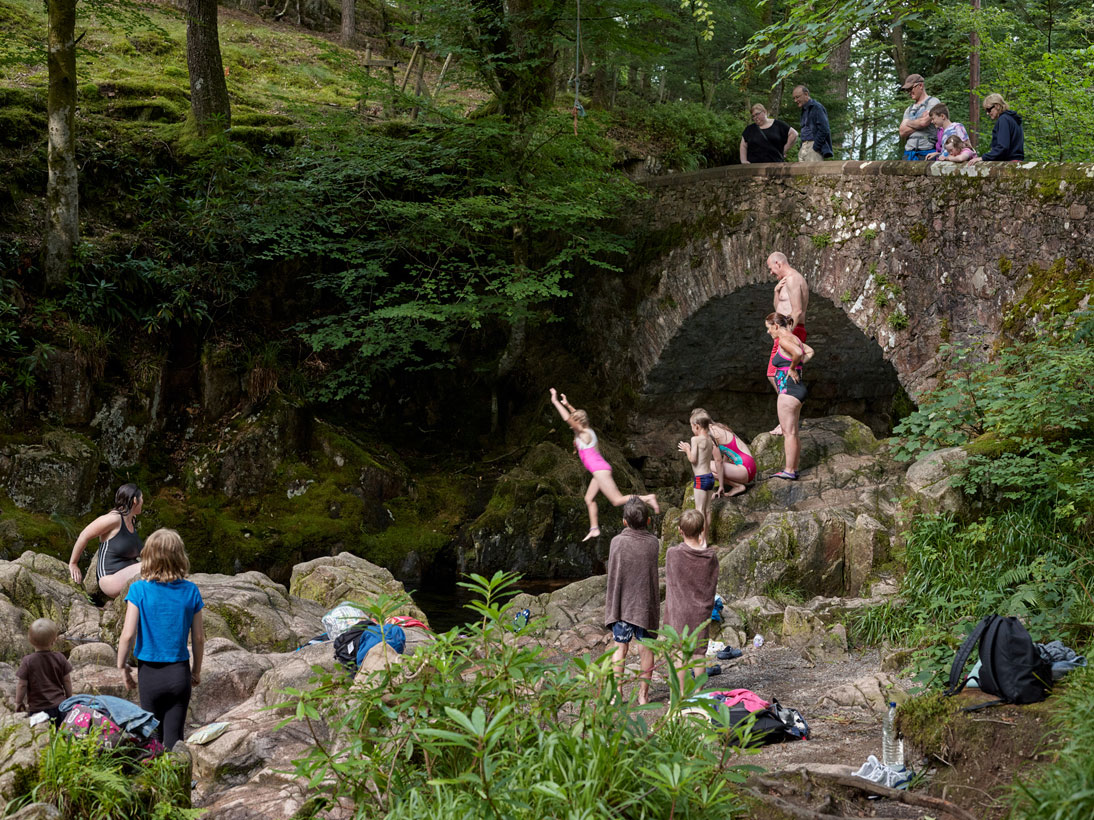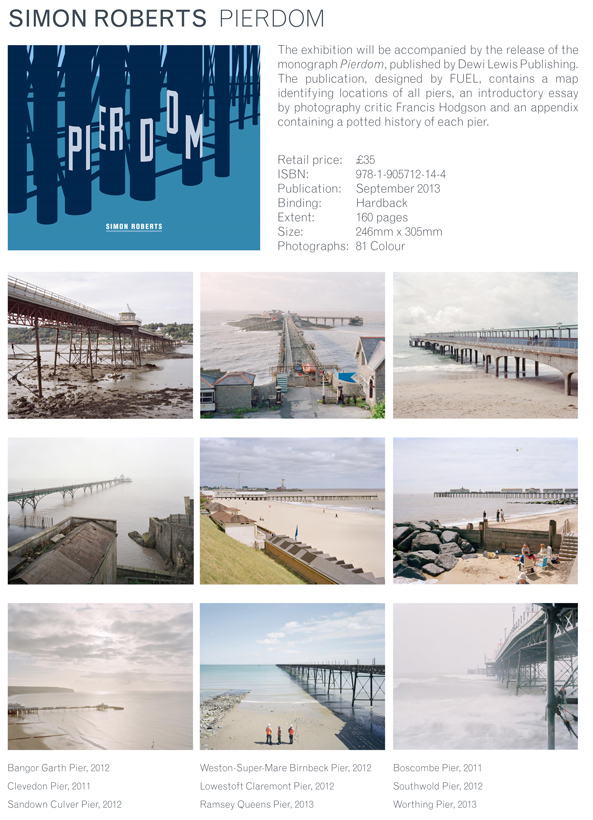Composed of two parts; ‘How did we get here?’ showcases various photographic and video works spanning the past 15 years of my career including We English, Pierdom, Merrie Albion and the Brexit Lexicon. It explores issues around identity, belonging and the complex relationship between history, place, and culture. The second part, ‘Where do we go now?’ allows visitors to participate in a series of workshops and open sessions where people are given a unique opportunity to respond creatively to the current social climate, culminating in a new artwork piece (The Public Gallery), that will develop over the course of the exhibition. The new piece will be unveiled in the storefront window in the last week of the exhibition.
Running from 20th May to 30th June, the FREE to enter exhibition will be held every Wednesday-Sunday from 11am-5pm at the previous H&M store within Grosvenor Shopping Centre in Chester, in a newly remodelled space that offers an immersive environment in the heart of the city.
My photograph and video works, which are displayed over both floors of the former H&M store, offer a commentary on the social and political issues that we face in our daily lives, questioning the choices that have led us to where we are today. Together, the two elements of the exhibition will act as a catalyst for open discussion about the function of the British High Street as the future use of urban spaces are increasingly debated. The work touches on prevalent and contentious issues, from exposing our post-imperial predicament, the complications of New Commonwealth immigration, the Brexit schism, to the possibilities of UK devolution and the consequences of the Covid-19 pandemic.
We have arranged an extensive public programme collaborating with local schools, Universities and community groups. Workshops are being led by local volunteers and are also working with Redeye, Photoworks and collage artist, Mark Murphy. Some of the public workshops available to the general public are:
Zine / poster workshop in response to the Simon Roberts exhibition
9 & 11 June
Redeye – the Photography Network – workshops for Degree and A’level student
15 June
Collage workshop with Mark Murphy
18 June
The exhibition was commissioned by Chester Visual Arts and funded by Arts Council England.
You can download a pdf with more information about the exhibition here.
Runs until 10th March 2018.
See installation photographs here: https://www.flowersgallery.com/exhibitions/view/simon-roberts-merrie-albion#works
For over a decade, Simon Roberts has photographed events and places across Britain that have drawn people together in public, reflecting on the nature of our shared histories and communal experiences.
Merrie Albion – Landscape Studies of a Small Island brings together iconic images and many previously unpublished photographs, recording social practices and customs linked to the British landscape, as well as some of the economic and political theatre that has helped define recent history.
The work in the exhibition ranges across various projects, both commissioned and independently produced over the last ten years, from single photographs made around the time of Roberts’s major photographic project We English, to his subsequent work as the official artist of the General Election of 2010, and his series National Property: The Picturesque Imperfect.
While Roberts’s interests have often gravitated towards evolving patterns of leisure, and the complex relationship between history, place and culture, he has also photographed events that have a more immediate, topical significance in Britain’s recent past, and which collectively form a detached visual chronicle of the times in which we live.
In works such as Broadstairs Dickens Festival, Isle of Thanet, the landscape resembles a stage set for the costumed characters performing on the beach. Other examples of collective gatherings range from religious festivals, such as Eid al-Fitr Celebrations, Jamia Mosque, Bristol; or social and political events represented in After the Riots, London Road, Croydon, and the recent photograph Grenfell Tower, North Kensington, London.
Creating a view of contemporary society that is far from straightforward, Roberts critically conflates the traditional genre of landscape with social documentary, layering ideas of national character through relationships to both place and particular moments in time.
Of his work David Chandler, Professor of Photography at University of Plymouth, has said: “Roberts’s work presents the viewer with complex relationships between people and places and incongruous juxtapositions of history and contemporary culture that create gentle ironies and underlying tensions across the images. Played out through particular local and regional contexts, it is these tensions that ultimately deny any consistency of mood and resist the coherent, and possibly seductive sense of binding national characteristics.”
You can download the press release here.
Above: Willy Lott’s House at Flatford, East Bergholt, Suffolk, 2014
Flowers Gallery is pleased to present a new series of photographs by Simon Roberts, ‘National Property: The Picturesque Imperfect’.
PRIVATE VIEW: TUESDAY 7 JULY 6 – 8PM
Building on his previous major bodies of work: We English (2009); The Election Project (2010) and Pierdom (2013); Roberts has turned his attention to heritage sites across England, exploring themes of identity, memory and nationhood through our everyday interactions with the landscape.
In 2014, Roberts travelled around the country to photograph popular scenic destinations, heritage sites and historic properties owned on behalf of the nation. Capturing the activities and interactions of visitors at each location, his photographs reflect on how the countryside has been modeled and managed for the purposes of leisure, and in turn, how our sense of belonging is determined by a connection to place.
The elevated perspective of his large-format tableaux sets the viewer at a critical distance from the scene. Taking his photographs from a high vantage point, often from the roof of his motorhome, Roberts attempts to map the patterns of contemporary life, which he describes as “governed by forces that are not possible to see from a position within the crowd”. Presenting an alternative viewpoint to the pastoral idyll, Roberts highlights our shared and sometimes imperfect experience of the landscape, inviting wider questions about private ownership and public usage of land.

Image: River Esk at Trough House Bridge, Eskdale, Cumbria, 2014
“Roberts’ work explores senses of belonging in landscapes. Since land invariably belongs to somebody, landscape is closely linked to notions of ownership, by individuals or institutions. Landscapes are also linked, beyond legal ownership, to larger worlds of nature and nation, beauty and history, as the term belonging extends to more shared senses of attachment, citizenship and entitlement.” – Stephen Daniels. Excerpt from the upcoming publication: Landscapes of the National Trust (Pavilion Books, October 2015).
More details here.
The printing of National Property is sponsored by Spectrum Photographic.

My second solo exhibition at Flowers Gallery in London will be Pierdom, opening on 10th September. An associated book, published by Dewi Lewis Publishing, will be launched on the same night.
For more details, visit http://www.flowersgallery.com/exhibitions/flowers/2013/simon-roberts-pierdom
British photographer Simon Roberts has spent the past three years creating Pierdom, a comprehensive survey of Britain’s piers. Predominantly constructed during the 19th Century in the context of expanding Victorian seaside resorts and railways, these structures were often erected as landing docks for pleasure steamers and other sea craft. Growing to accommodate the needs of day-trippers escaping the smog of the city, engineers began to incorporate bandstands, cafes and music halls into their designs, embracing the growing notion of ‘pleasure seeking’ by the seaside.
Pierdom addresses the historical significance of these architectural structures placed in comparison with their modern interpretation and functionality. Roberts’ photographs of ruinous piers such as Birnbeck Pier (2012) are in contrast with those such as Ryde Pier (2012) in which the local community and everyday usage of the landscape is represented by a skate boarding park which dominates the composition. It is this socio-cultural element of the landscape that has sustained Roberts’ interest, revealing a deep fascination with the way humans interact with their environment, and in eccentric British pastimes.
At the turn of the century the British coastline boasted over 100 piers, some modest and functional, others elegant, exotic Victorian structures thrusting out into the sea. Now under half remain, the others destroyed by fierce weather and fires, with many dismantled during the 2nd World War to prevent German landings. Britain’s piers have become cultural landmarks, tracing history, national identity and economic fortunes from Victorian industrialism to the post-war boom, and finally now to the recent economic downturn.
Roberts’ large format photographs are taken with great technical precision, often from elevated positions encorporating peripheral details and the elements, thus enriching the viewing experience of each print. Through formal devices associated with the picturesque; perspective, asymmetry and juxtaposition, the photographs engage us with contemporary issues about our uneasy and fragile relationship to both nature, and our urban environments.The series is at once factual yet warm, a broad architectural and anthropological study of our coastline as a microcosm of British society.
